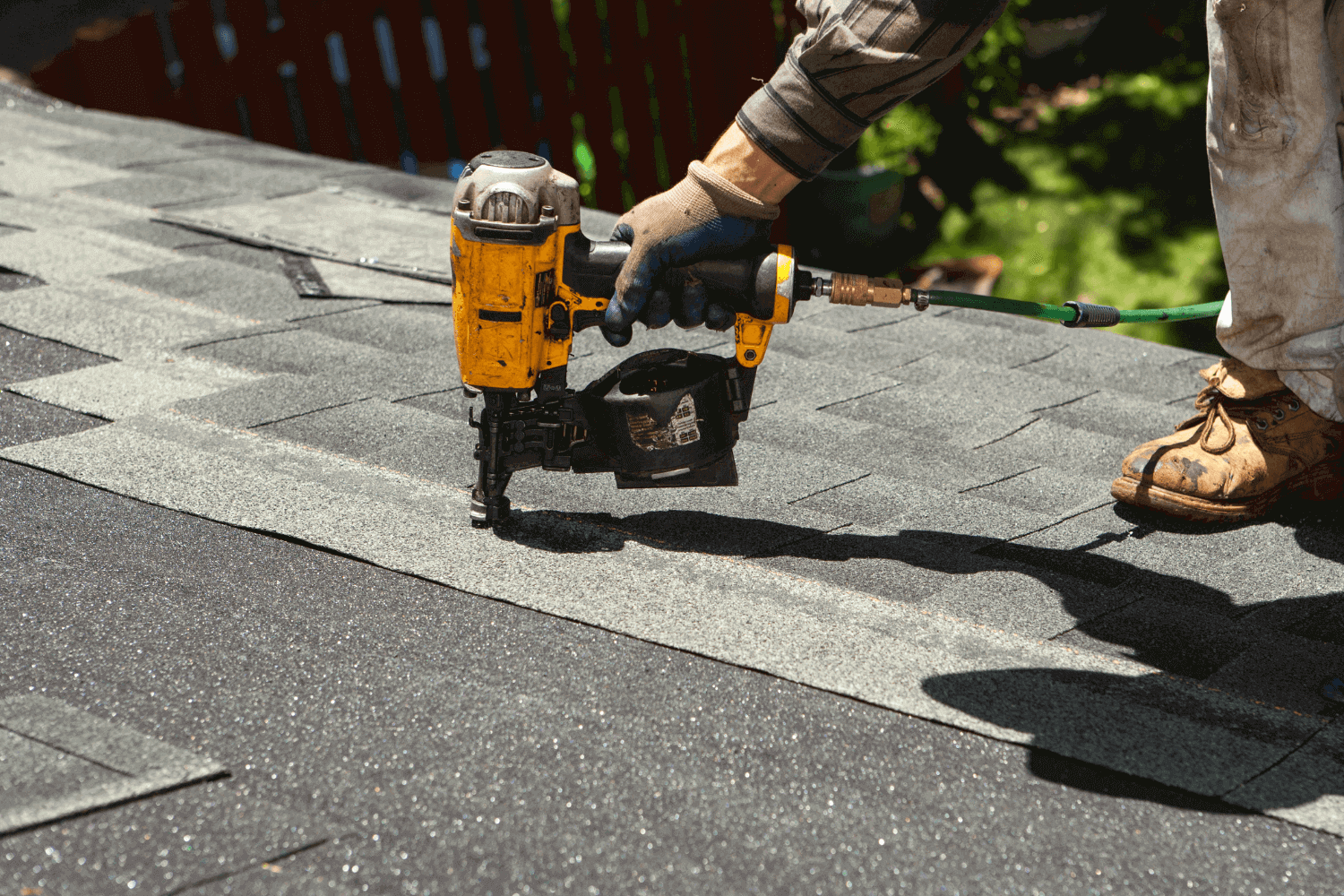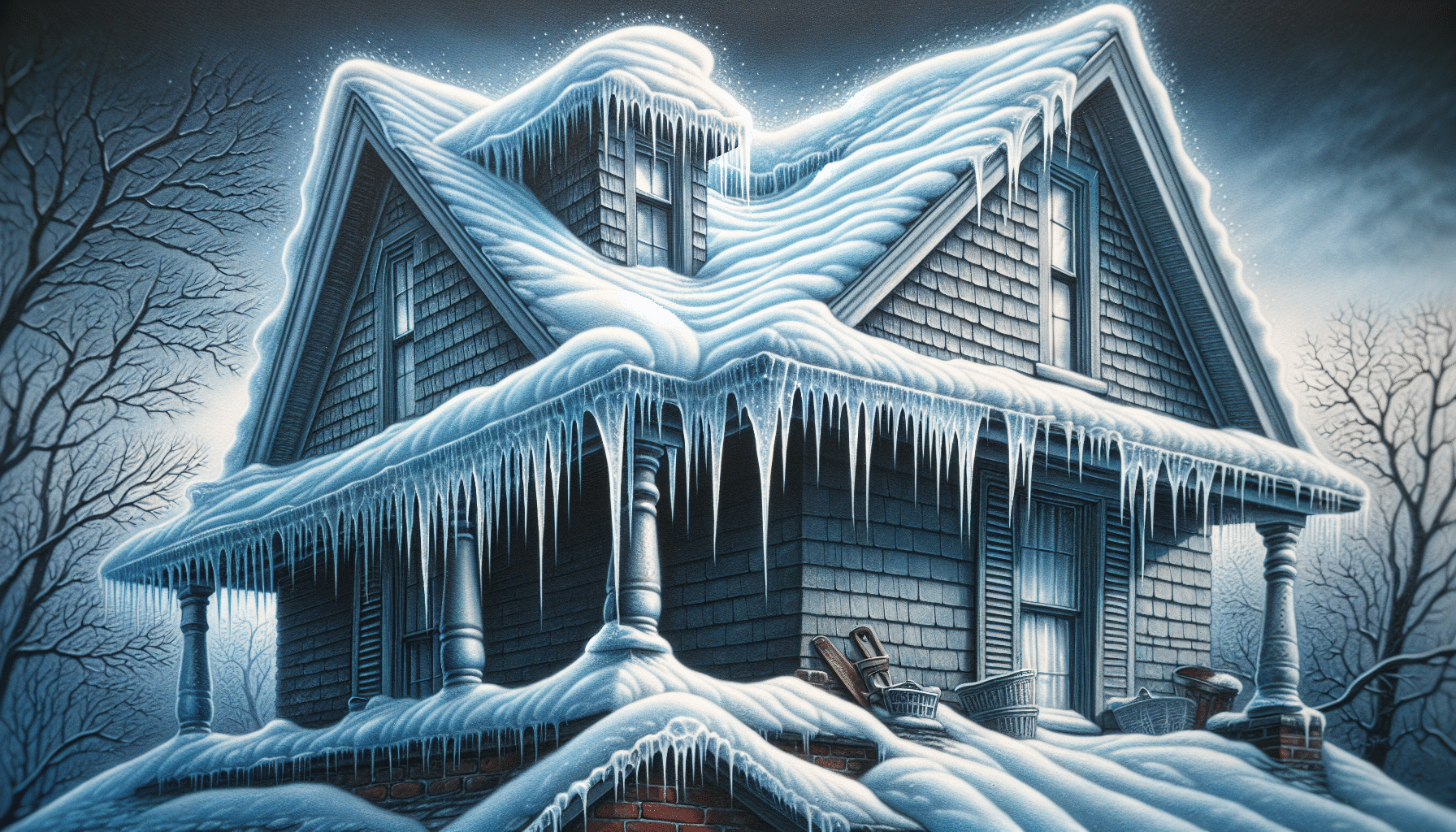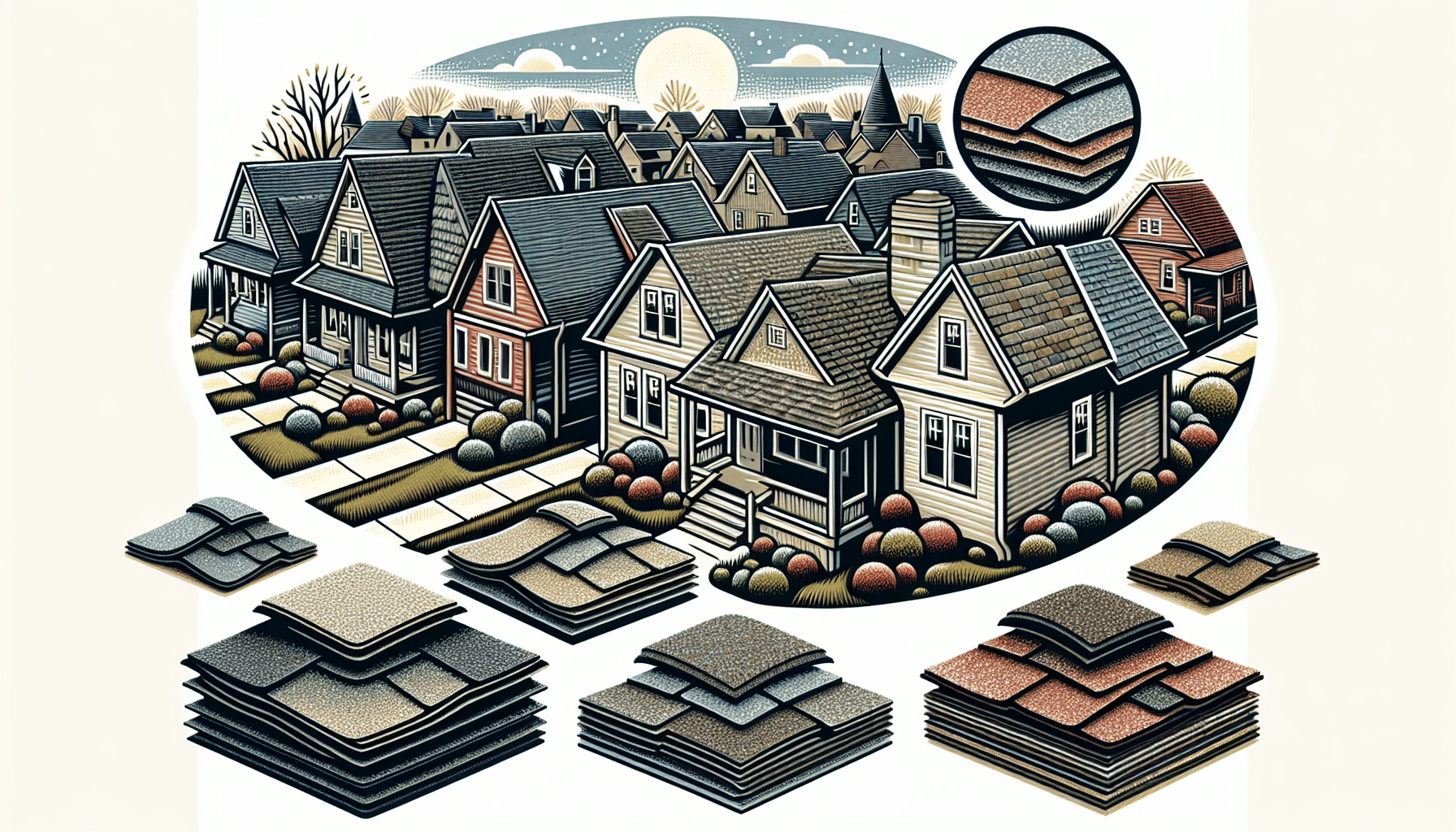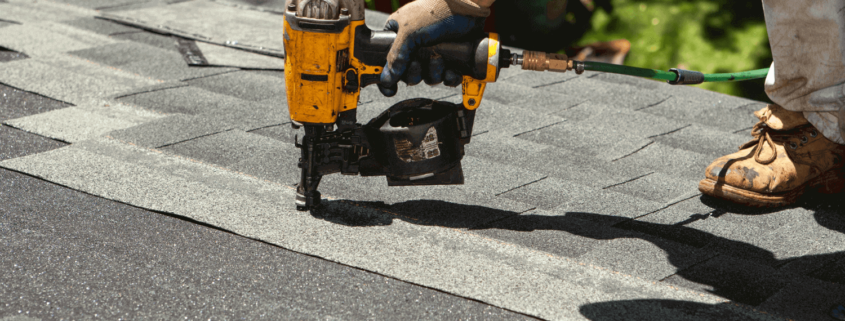Optimal Roof Replacement Seasons: What Is the Best Time of Year to Replace Your Roof in Michigan and Ohio?
In Michigan and Ohio, the question of “what is the best time of year to replace your roof in Michigan and Ohio?” is typically answered during the more temperate months of late spring through early fall. This period not only offers the ideal weather for your roofing materials to set properly but also allows for a safer, more efficient installation process. Our comprehensive guide examines why these months are favorable and how planning your roof replacement during this window can lead to long-term benefits.
Key Takeaways
-
The best time for roof replacement in Michigan and Ohio is between April to October, with late spring and early fall offering the most favorable weather conditions for both materials and labor.
-
Choosing the right roofing materials, like asphalt shingles or metal roofing, is critical for durability against local climate challenges, such as ice dams, high winds, and hail in Michigan and Ohio.
-
Proper roof maintenance, including regular inspections, debris removal, and addressing repairs early, is essential for prolonging the life of your roof and avoiding more costly damages.
Seasonal Considerations for Roof Replacement in Michigan and Ohio

The success of your roof replacement heavily depends on its timing. In Michigan and Ohio, the optimal period for replacing roofs spans from April to October, correlating with the region’s limited duration of warm weather. The end of summer is particularly advantageous for roofing installations in Michigan, owing to more favorable weather conditions.
Michigan roofing companies often schedule installations up to the end of the year to capitalize on the suitable weather just before the onset of winter. This scheduling flexibility lets homeowners strategically plan their roofing projects for a smooth and efficient installation.
Spring and Fall: Prime Time for Roofing
Late spring and early fall offer moderate temperatures that are ideal for roofing materials and labor, ensuring better installation quality. The milder weather during these seasons, combined with longer days, facilitates a more efficient and effective roofing installation process.
Homeowners should book their roofing projects ahead of time to fully capitalize on these ideal roofing conditions and ensure contractor availability.
Winter Challenges: Navigating Cold Weather Installations
While winter is not the ideal season for roof replacement, it’s not impossible. Replacing roofs during winter in Michigan and Ohio presents obstacles such as freezing temperatures and ice dams, which can create hazardous and slippery work conditions. However, despite these challenges, roof replacement can be successfully completed in the winter, provided that homeowners select a contractor with a proven track record of proper winter installation techniques.
Summer Months: Heat and Storm Concerns
While the summer months offer abundant sunlight, they also pose certain challenges for roofing projects. Here are some factors to consider:
-
High summer temperatures can have adverse effects on roofing materials.
-
Excessively hot conditions create a potentially unsafe work environment on the roof.
-
Summer storms, which are not uncommon in Michigan and Ohio, present additional risks for roof replacement projects, as they can bring sudden downpours.
These unexpected weather changes can interrupt the roofing process and result in project delays, impacting the overall timeline of roof replacements.
The Impact of Local Climate on Your Roof’s Lifespan

The lifespan of roofs in Michigan and Ohio is significantly influenced by the local climate. Factors such as ice dams, high winds, and hail damage can affect various roofing materials, thereby influencing their durability. For instance, during Michigan’s summers, intense sun exposure and heat waves can cause roofing materials to expand and contract, potentially leading to damage and leaks.
It’s important to note that not all roofing materials are created equal. Some materials, like asphalt shingles, are favored for their strength and durability against Michigan’s high winds, hail, heavy rain, and snow. Meanwhile, metal roofs offer energy savings due to their reflective properties, reducing cooling costs in summer, and absorbing warmth in winter’s colder climate when colored darkly. Choosing the right roofing system is crucial for long-lasting protection and efficiency.
Ice Dams and Freezing Temperatures
The formation of ice dams can lead to gutters being torn off, loosened shingles, and water backing up under shingles, resulting in leaks and interior home damage. When ice dams cause leaks, it allows water to enter attics, damaging ceilings, walls, floors, and can also promote mold and mildew growth within the home.
Preventing the formation of ice dams can be achieved through maintaining proper attic ventilation which helps to manage temperature and moisture levels.
High Winds and Hail Damage
High winds and hail storms are some of the most damaging weather events for roofs. Hail damage to roofs can be identified by random patterns of hits, loss of granules, and soft spots that feel like bruises, which are a consequence of the size, density, and velocity of hailstones. Similarly, high winds can lead to visible roof damage such as missing shingles and can compromise the adhesive seal of shingles, resulting in water penetration and potential subsequent damage.
Regular inspections, especially after incidents of severe weather, can help maintain and extend a roof’s lifespan through timely roof repairs.
Planning for Quality Roof Installation
Executing a quality roof installation necessitates meticulous planning and proper installation. Homeowners must consider the right contractor, the type of roofing material, and the timing of the project. Asking neighbors or Homeowner Associations for recommendations, checking state roofing contractor requirements and directories, and reviewing qualifications and references can guide homeowners to the right contractor choice.
Hiring a roofing contractor before your roof sustains severe damage can help avoid emergencies and related additional costs. Moreover, quality roof installation not only prevents costly repairs down the line but also contributes to the overall home value.
Choosing the Right Contractor
Securing the right contractor is a crucial factor in guaranteeing a successful roofing project. Roofing contractors such as Rapid Roofing should be evaluated based on:
-
Experience
-
Licensing
-
Insurance
-
Bonding
-
References
-
The ability to provide written estimates.
When planning a roofing project, it is critical to ask about the contractor’s past work with specific roofing materials, their process for handling insurance claims, and policies for scheduling around inclement weather. Rapid Roofing, with its 30 years of experience and commitment to customer satisfaction, is a reliable choice for homeowners in Michigan and Ohio.
Scheduling Your Project
An integral part of the planning process is scheduling your roofing project. The best time to schedule a roof replacement in Michigan and Ohio is between March and October, with fall offering more consistent weather conditions favorable for roofing. By planning roof installations in advance, homeowners can ensure optimal conditions and avoid the high demand of the peak roofing season.
To effectively schedule a roofing project, begin by consulting multiple roofers, checking references, comparing bids, and negotiating a fair price.
Material Matters: Selecting Roofing Materials Suited for Michigan and Ohio

Selecting the appropriate roofing materials holds equal importance as picking the right contractor. The climate in Michigan and Ohio should be a significant factor in this decision. Asphalt shingles, for instance, are the most popular roofing material in Michigan, and along with other durable options such as slate and metal, they are well-suited to handle the state’s harsh weather conditions.
The roofing material you choose can also significantly influence the lifespan of your roof. Some common roofing materials and their expected lifespans are:
-
Asphalt shingles: 20-30 years
-
Metal roofing: 40-70 years
-
Clay or concrete tiles: 50-100 years
-
Slate: 75-200 years
It’s important to consider the cost and expected lifespan of different roofing materials when making your decision.
Asphalt Shingles: A Popular Choice
Asphalt shingles are a popular choice among homeowners for their durability, cost-effectiveness, and versatility. These shingles are favored for their ease of installation, repair, and maintenance, offering a practical option for homeowners. Moreover, they enhance a home’s energy efficiency by offering excellent insulative properties, which help reduce heating and cooling costs and maintain comfortable indoor temperatures.
Lastly, the typical lifespan of asphalt shingle roofs is between 16 to 20 years, making roof shingles a reliable choice for residential roofing needs.
Metal Roofs: Longevity and Durability
Metal roofs are another excellent option for homeowners in Michigan and Ohio. These roofs offer:
-
Longevity, with a lifespan of 40-70 years, significantly outlasting the typical asphalt roof
-
Advantages during Michigan’s winters as they help prevent ice dams
-
Resistance to damage from mildew, mold, rot, insects
-
Ability to withstand high winds up to 120 miles per hour
The strength of metal roofs allows them to perform well under heavy snow, aiding in snow melting, and they are also effective for low-sloped roofs by promoting better water runoff.
Flat Roofs: Specialized Solutions
Flat roofs, while not as common, require specialized solutions. For instance, tapered rigid foam panels can be used to create a gradual slope on flat roofs, essential for proper drainage and preventing water pooling in snowy regions. Engineered lumber is a strategic choice for flat roofs in heavy snowfall areas, providing the required strength to support substantial snow loads without a steep pitch.
Lastly, flat roofs typically come with warranties of 10-20 years and can last up to 25 years with the implementation of appropriate maintenance measures.
Enhancing Your Home’s Curb Appeal and Value with a New Roof
Besides its functional benefits, a new roof can remarkably boost a home’s curb appeal and value. A new roof significantly improves a home’s curb appeal, which is the visual attractiveness from the street. High-quality materials such as:
-
luxury shingles
-
synthetic shingles
-
cedar shakes
-
slate tiles
Our website offers a variety of resources for homeowners, including recent posts that can make a property stand out to potential buyers.
Moreover, a new roof can increase the value of your home. The national average ROI for replacing an asphalt shingle roof is 61.1%, potentially increasing the home’s value by $17,807 of the original $29,136 spent. A standing seam metal roof has a national average ROI of 48.9%, potentially adding $23,163 to a home’s resale value.
Thus, a new roof is one of the best home improvement investments you can make, with a high return on investment and the potential to impact the actual selling price of the house.
Proactive Measures: Maintenance Tips to Prolong Your Roof’s Life
Proper maintenance is crucial after installing your new roof to prolong its lifespan. Proactive measures such as regular inspections, repairs, and debris removal can significantly prolong your roof’s life. For instance, clean gutters and downspouts regularly to ensure proper drainage, prevent water accumulation, and protect against roof damage.
Removing moss and algae from the roof using appropriate cleaners can prevent the degradation of roofing materials. Trimming overhanging branches can prevent damage from falling limbs or increased debris, which can lead to dents or leaks.
Regular Inspections and Repairs
Scheduling regular roof inspections can help you stay informed about the condition of your roof and identify early signs of wear or damage. Promptly addressing any leaks by seeking an experienced roofing expert is crucial in assessing the extent of the damage and performing necessary repairs, which prevents further interior damage.
Regular professional annual roof inspections are a valuable investment in Michigan as they help identify issues early, potentially saving on expensive future costs.
Dealing with Debris and Other Obstructions
Keeping your roof clean and free of debris is another proactive measure that can extend its lifespan. Regularly cleaning gutters and ensuring they are free from leaves and debris are critical to preventing clogs and water damage to the roof.
Ensuring attic vents are clear of obstructions is an important aspect of roof maintenance, as it aids in proper ventilation and prevents issues that can lead to roof damage.
Financial Considerations: Understanding Costs and Insurance
Grasping the financial aspects of roof replacement is crucial in plotting your project. Roof replacement costs in Michigan typically range between $9,000 and $30,000, with the average homeowner spending around $17,000 on a 2,000 sq. ft. cross gable roof using mid-grade architectural shingles. The total cost of a roof replacement is influenced by various factors, including the type of roofing material chosen, the roof’s size, pitch, and shape, as well as the labor costs specific to the region.
Another key financial aspect to consider is insurance. Investing in a new roof may lead to reduced insurance premiums for homeowners, which not only can offer ongoing cost savings but also serves as an advantage when selling the property.
Estimating Your Investment
To accurately estimate the cost for a roof replacement, homeowners should:
-
Request quotes from two to three local roofing contractors for an in-person inspection.
-
The average roof size in Michigan is between 1,500 to 2,000 square feet.
-
Replacement costs for this size can range from $6,750 to $52,000.
Additional costs to consider when budgeting for a roof replacement include removal and disposal of the old roof, any necessary structural repairs, and roof warranty expenses.
Navigating Insurance Claims
Navigating insurance claims for roof replacements can be a complex process. However, homeowners should personally file roofing insurance claims with a simple phone call, allowing adjusters to handle the process often without the homeowner’s presence.
When working with an insurance adjuster, homeowners should be flexible to the adjuster’s schedule and allow them to conduct their inspection without interruptions. Directly hiring contractors instead of going through general contractors can save on middleman fees and ensure better control over the quality of work.
Summary
In conclusion, timing your roof replacement correctly, choosing the right contractor and materials, and maintaining your roof properly can significantly prolong its lifespan and enhance your home’s value. Remember, while installing a new roof can be a significant investment, it’s one that will pay off in the long run by increasing your home’s value, enhancing its curb appeal, and offering ongoing cost savings through reduced insurance premiums.
Frequently Asked Questions
What time of year is cheapest to replace roof?
The cheapest time to replace your roof is typically during the winter, as this is the slowest time of year in the roofing industry, leading to more competitive prices from contractors.
How much does it cost to replace a roof in Michigan on average?
The average cost to replace a roof in Michigan is $12,000. It’s important to consider this when budgeting for the replacement.
What season is best for roofing?
Autumn is the best season for roofing due to comfortable temperatures, mild weather conditions, and lower humidity levels, which make it easier and more efficient for roof replacement.
When should I replace my roof in Ohio?
You should replace your roof in Ohio every 15-20 years, taking into consideration weather-related damage.
When is the best time to replace a roof in Michigan and Ohio?
The best time to replace a roof in Michigan and Ohio is between April and October, with late spring and early fall offering the most favorable conditions for this project.






